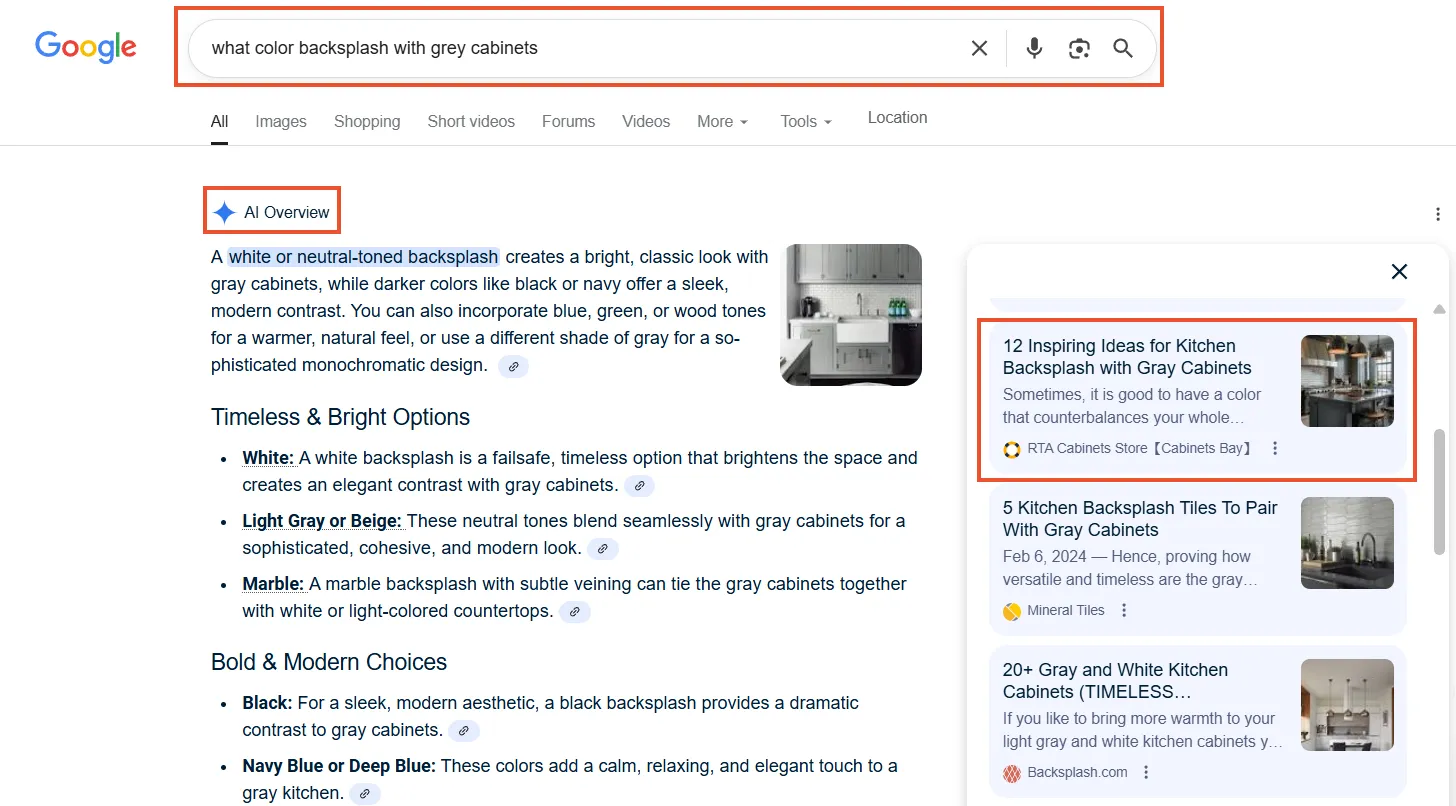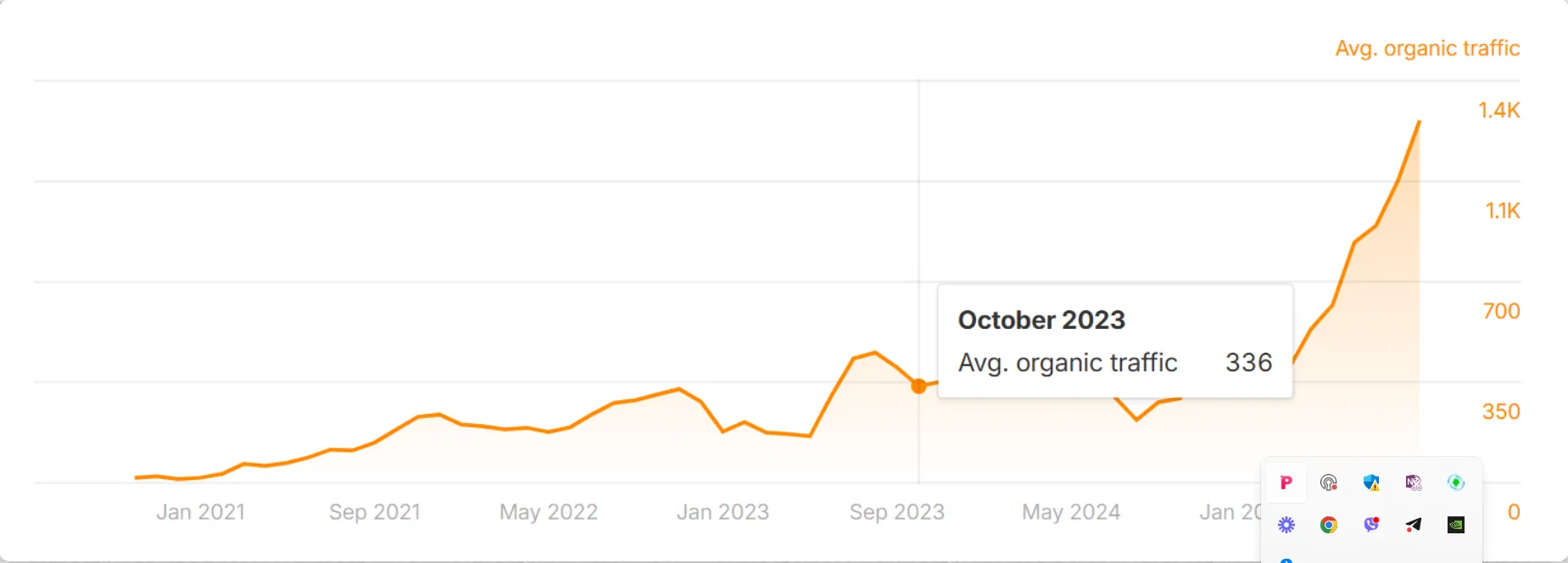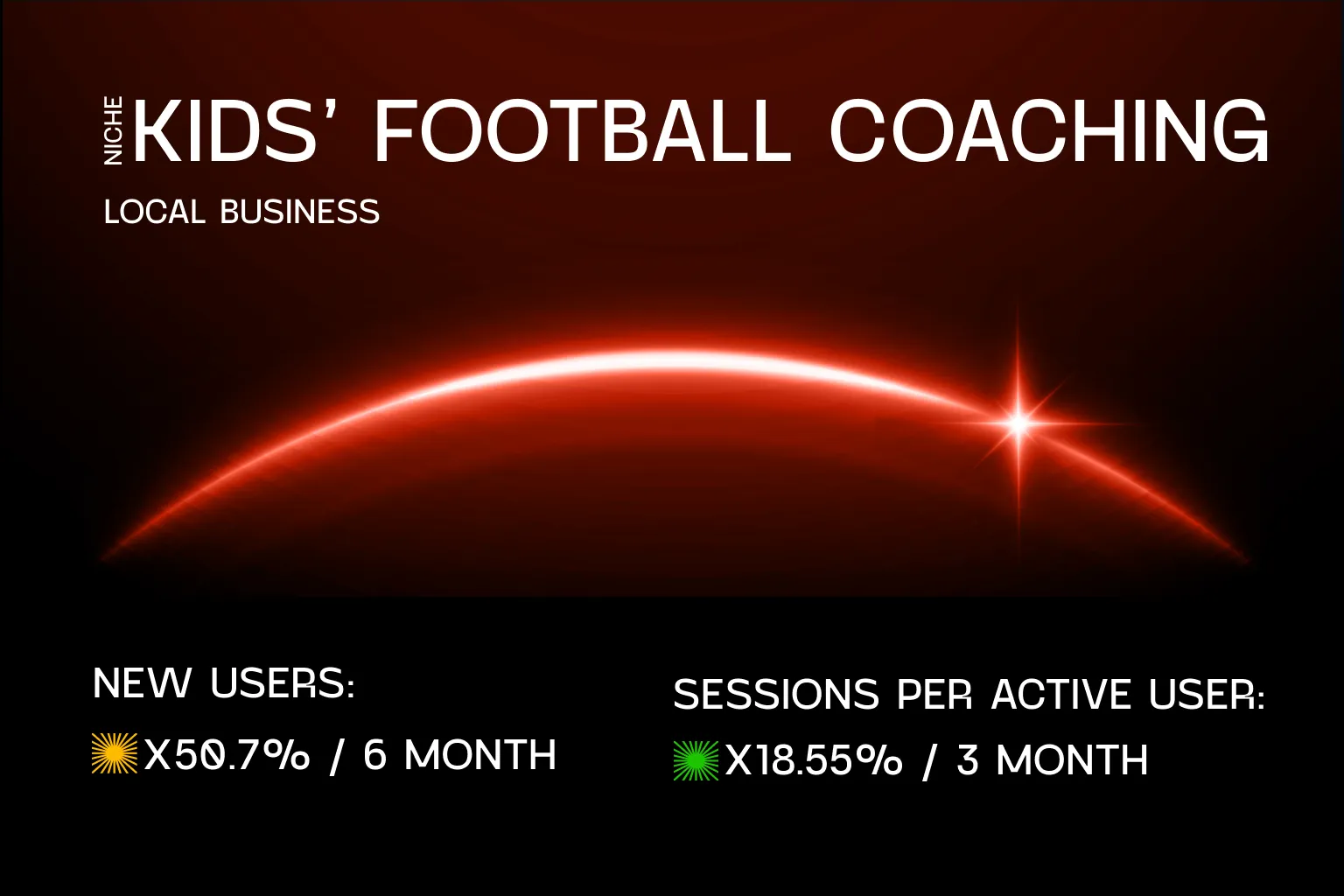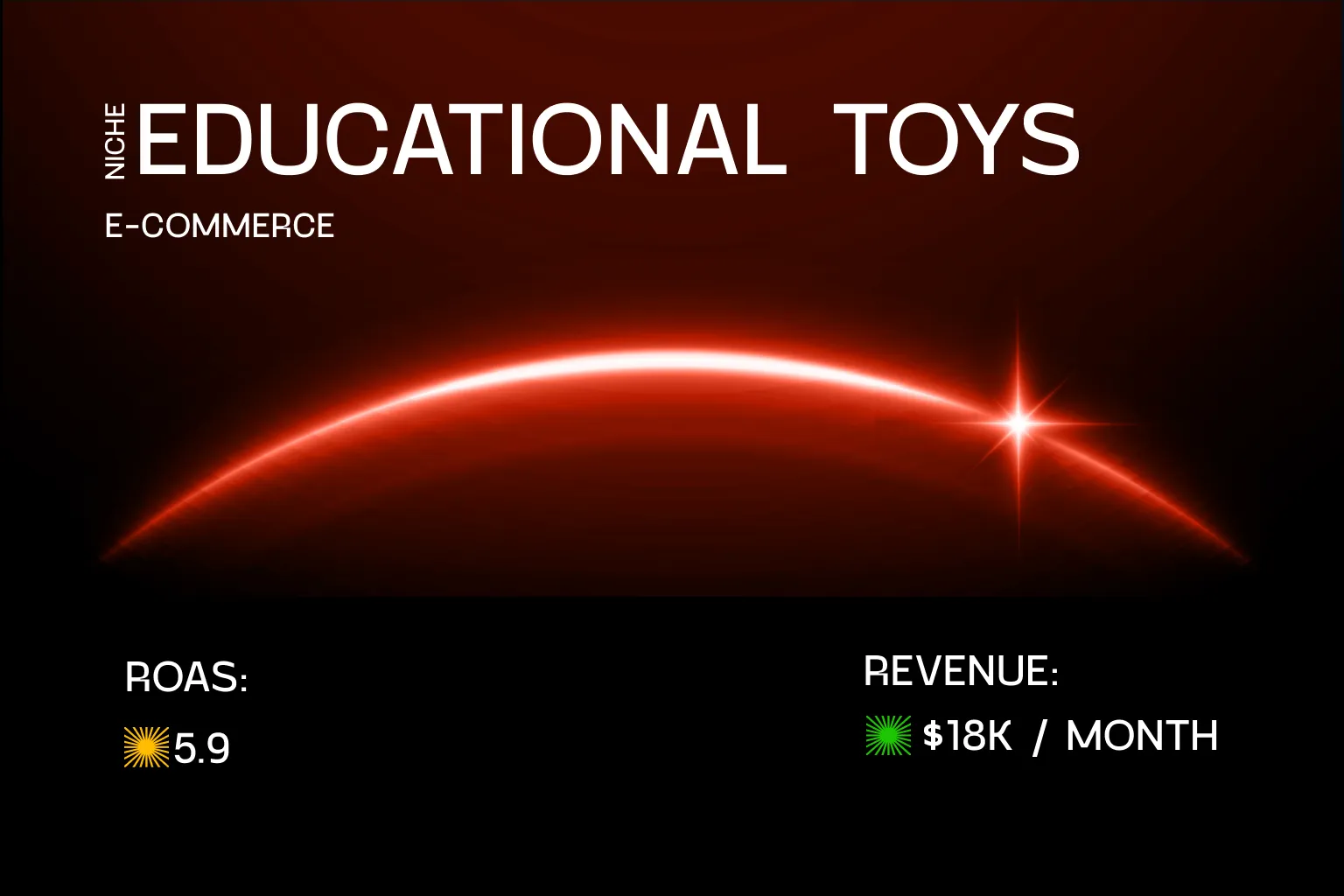Goals and constraints
We were hired by a U.S.-based kitchen cabinets e-commerce retailer operating in a hyper-competitive category with long, trust-heavy buying cycles. The mandate: stabilize revenue, make growth predictable, and prioritize high-intent customers while working within strict technical and budget constraints. The monthly budget was planned at $1,000-1,200 but frequently dropped to $700-800. Technical implementation depended on a third-party developer, which caused critical delays to site changes, content publishing, and navigation updates. Payments for content and links were often late, rendering long-term planning difficult.
Introduction
At kickoff we saw a volatile revenue pattern, weak search visibility, and a site that did not support how people actually buy kitchens. Nearly half of 5-month revenue came from a single anomalous month, followed by a 9x drop. With a new domain, minimal content, and low authority, the client was outgunned by national retailers and established online specialists. We focused on controllable SEO levers: fixing technical fundamentals, publishing authoritative content across the funnel, expanding commercial coverage into high-intent niches, and building authority through links - all while navigating unstable budgets and development bottlenecks. The outcome was a transition from randomness to a managed, scalable system with predictable traffic and month-over-month revenue stability.
Client context
The client sells kitchen cabinets online in the U.S. - a category dominated by Home Depot, Lowe's, Wayfair, and specialist e-commerce brands. It is a high consideration purchase where trust, comparison content, and a smooth path from research to purchase are non-negotiable. The starting point: a new site with low authority, technical issues, thin content, and no clear commercial structure for niche demand. Most critically, the business was unstable - dependency on one outlier month hid the lack of a repeatable customer acquisition system.

Key blockers at kickoff:
- Technical - third-party developer caused long delays shipping fixes and navigation changes.
- Financial - inconsistent payments and reduced monthly budgets disrupted content and link velocity.
- Commercial - site structure missed high-intent niches; collection UX created friction and duplication.
Strategy
We built the plan around five testable hypotheses, grounded in competitor and keyword analysis. The throughline: win where budgets do not decide outcomes by compounding quality content, robust technical foundations, and steady authority growth. Where development was a bottleneck, we designed workarounds that could still ship value fast.
Hypothesis 1 - Technical foundations drive all subsequent gains. We audited the site, fixed critical errors (broken links, duplicate titles, blog duplicates), added an SEO plugin to centralize meta, schema, redirects, and addressed Core Web Vitals blockers. The thesis: removing indexation friction increases the ROI of every content and link dollar spent thereafter.
Hypothesis 2 - Funnel-wide content builds trust and captures long-tail demand. We produced 50+ optimized commercial texts and 70+ expert blog articles to match how people actually research kitchen decisions. The thesis: instrumented ToFu-MoFu content would capture low and mid-intent queries, build authority, and create assisted conversions without a paid budget arms race.
Hypothesis 3 - Links increase competitiveness. With Domain Trust at 12, the site could not rank for meaningful commercial terms. We built a guest post plus crowd strategy to steadily grow high-quality referring domains. The thesis: authority uplift increases top-20 entry rates and unlocks the ceiling for new and existing content.
Hypothesis 4 - Expand commercial coverage into niche, high-intent queries. We planned 50+ new commercial pages for segments like "kitchen sink cabinet" and "kitchen island cabinets" and mapped a new navigation to surface them. Due to developer delays, many pages remained unpopulated for too long and the menu could not be updated, capping impact. The thesis remains valid and partially tested.
Hypothesis 5 - Collection UX improvements increase conversion and consolidate ranking signals. We specified a redesign and an AJAX filtering system to replace many near-duplicate subpages. The development task was not executed, so the test could not be run.
Competitive landscape
We segmented competition into three tiers to find a defendable strategic gap:
- Tier 1 - National retailers (e.g., Home Depot, Lowe's, Wayfair). Strength in brand and inventory; content is broad and surface-level.
- Tier 2 - Online specialists (e.g., RTA Cabinet Store, Cabinets.com). Strong commercial SEO; weak ToFu/MoFu content.
- Tier 3 - Niche media (e.g., The Spruce, interior design blogs). Exceptional information depth; no purchase pathways.
The opportunity: combine deep, trustworthy information with a frictionless path to products. Focus on expert comparison guides and intent-rich topics that larger players under-serve. Win links organically. Avoid direct budget wars with national brands by competing on relevance and depth.
Keyword strategy
We ran two parallel tracks:
- Commercial queries - mapped 79 priority terms at the intersection of inventory relevance, competitor success, and GSC impressions. We avoided queries that did not match the client’s assortment to protect relevance and conversion potential.
- Informational queries - targeted trends and practical planning topics, with priority on "quick wins" with moderate competition like "birch vs maple cabinets." Goal: earn traffic faster, build topical authority, and assist lower-funnel pages.
Execution
We executed in sprints to match budget releases and development availability. Our toolset included Google Analytics 4, Google Search Console, Ahrefs, Seranking, and Looker Studio to consolidate reporting. We verified key metrics across multiple sources, cross-checking Ahrefs visibility trends against GSC clicks and impressions, and financials via GA4 e-commerce reporting.
- Technical SEO - audit and remediation, SEO plugin setup, redirect management, duplicate cleanup, and Core Web Vitals fixes.
- Content - 57 optimized commercial texts and 73 blog articles spanning ToFu-MoFu topics with internal linking to commercial endpoints.
- Internal linking - systematic cross-linking from information pages to relevant collections and product groups to channel intent and distribute authority.
- Link building - 79 guest posts and 562 crowd placements to grow high-quality referring domains and lift Domain Trust from 12 to 25.
- Commercial expansion - created 50+ niche landing pages. Full impact was delayed by unpopulated product grids and frozen navigation while awaiting development.
- UX recommendations - delivered specs for collection page redesign and AJAX filtering to reduce pogo-sticking and consolidate near-duplicate subpages. Not implemented due to development backlog.
Segmentation and personalization. We operationalized personalization through specificity instead of software - building pages that precisely matched intent at each funnel stage:
- Inspiration (ToFu) - visual ideas and trend roundups to attract broad audiences and introduce the brand voice.
- Research (MoFu) - comparison and how-to content for material, finish, and layout choices to build trust near decision points.
- Purchase (BoFu) - optimized category and product pages mapped to transactional queries.
Data transparency. We published live dashboards and retained links to source systems for verification. See the consolidated reporting view in Looker Studio. Supporting artifacts: baseline trend videos in Loom and monthly snapshots in PixelTaken.
Content examples - representative pieces by funnel stage:
- ToFu inspiration: ideas roundup that introduces the brand via visual curation.
- MoFu planning: backsplash pairing with gray cabinets - detailed, practical guidance that earned AI Overview visibility.
- MoFu comparison: birch vs maple cabinets - balanced, technical comparison positioned to assist BoFu conversion.

Results
We moved from random spikes to a predictable system. Excluding the anomalous early spike month, average monthly revenue increased from $6,575 to $7,858 - a +20% uplift in normalized revenue. Audience also grew +20% (average monthly users from 527 to 633). During the engagement, four months exceeded $12,000 revenue with a record month of $18,380, demonstrating the system’s capacity to set new highs.

Organic traffic - the path to 4.3x growth
Act I - Foundation and first breakthrough (Oct 2023 - Jun 2024). Starting from 336 monthly organic visits, technical remediation plus content and keyword expansion delivered a predictable climb to 652 visits by June 2024 - a 94% increase from the starting point.


Act II - Stress test and resilience (Jun - Oct 2024). The June 2024 Spam Update caused a temporary correction with a trough at 218 visits in August 2024. The dip was short-lived, indicating that quality and relevance fundamentals were intact.

Act III - Recovery to exponential lift (Nov 2024 - Sep 2025). From the 218-visit trough, organic traffic climbed to 1,262 visits by September 2025, peaking around 1,400. That is +329% from the low point and 4.3x growth overall.

GSC confirmation. Google Search Console corroborates the visibility expansion and click growth. Comparing two 3-month windows, impressions rose from 338,000 (Aug-Oct 2024) to 655,000 (Jun-Aug 2025), +94%. Clicks increased from 1,328 to 1,851, +39%.


Leadership in AI Overviews. Our expert content also earns disproportionate presence in Google’s AI-generated answers, signaling high completeness and authority across key topics.

What changed and why it worked
- Problem - erratic revenue and low authority. Hypothesis - fix technical debt to unlock content and link ROI. Action - audit, SEO plugin, redirects, CWV fixes. Outcome - predictable indexing, higher crawl efficiency, and stable growth curve.
- Problem - thin content and long trust cycle. Hypothesis - publish expert content across ToFu-MoFu plus optimized commercial pages. Action - 57 commercial texts, 73 blog articles with internal linking. Outcome - expanded keyword coverage, higher assisted conversions, and AI Overview presence.
- Problem - weak backlink profile. Hypothesis - steady acquisition of high-quality links elevates competitiveness. Action - 79 guest posts and 562 crowd links. Outcome - Domain Trust from 12 to 25, improved rankings ceiling for commercial terms.
- Problem - missed niche demand. Hypothesis - more specific landing pages capture high-intent traffic. Action - created 50+ niche commercial pages. Outcome - partial validation due to developer delays; clear path to scale when fully rolled out.
- Problem - poor collection UX and duplicate subpages. Hypothesis - redesign and AJAX filtering increase conversion and consolidate signals. Action - delivered detailed dev spec. Outcome - not implemented; represents the biggest remaining opportunity.
- Problem - budget instability. Hypothesis - sprint-based execution squeezes ROI from each tranche. Action - flexible planning, prioritized backlogs, and quick wins. Outcome - steady compounding results despite financial and technical variance.
Lessons and next steps
Three lessons stand out. First, technical foundations are the force multiplier - they determine the return on every subsequent content and link decision. Second, funnel-spanning content pays off in long, trust-based cycles - it wins links organically, triggers AI Overview inclusion, and channels intent to commercial pages. Third, resilience matters - algorithm updates are inevitable; sites with strong fundamentals recover faster and push higher.
Concrete next steps to unlock additional growth:
- Ship the collection page redesign and AJAX filtering - reduce friction, consolidate duplicate variants, and improve conversion rates on head commercial terms.
- Complete the navigation update and ensure every niche landing page is fully populated with products and schema - raise indexation and click-through from both search and internal discovery.
- Expand the niche commercial taxonomy where we already own MoFu topics - programmatic coverage of related subtypes and dimensions.
- Maintain a steady link acquisition cadence focused on high-relevance placements - continue authority climb to compete on more competitive head terms.
- Layer CRO on high-traffic MoFu articles - targeted CTAs, comparison tables, and guided flows to commercial endpoints.
- Deepen reporting automation in Looker Studio and align dashboards to executive KPIs for faster decision cycles.
- When development cycles are constrained, prioritize changes that increase indexability and conversion at the same time - navigation, filters, and content templates that scale.
The project demonstrates that even in a category dominated by giants, a disciplined organic strategy can turn volatility into a predictable, growing system - without a budget arms race. With the remaining UX and structure work shipped, the commercial upside is still significant.







.svg)